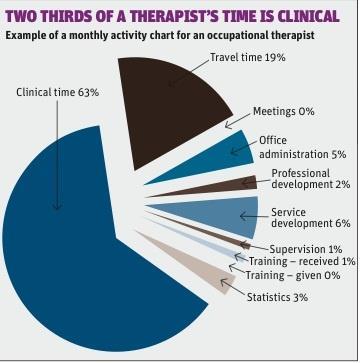Communicating activities to commissioners is easy with the right tariff system, and delivers enhancements in the performance of care teams, say Rachel Simkiss and Alex Hadayah.
The use of tariff in costing community services has been expanded to feature a multidisciplinary team specialising in neurorehabilitation.
Promoting a business-like focus among service providers and enabling them to communicate their worth with commissioners has become vital. Clinicians are all too aware of the importance of justifying their activities but the tools to record activity and communicate this with commissioners can seem out of reach.
The complexity and diversity of activities undertaken by a multidisciplinary team that is not only based in the community but also specialises in neurorehabilitation could seem particularly impenetrable. However, the disability options team working in Tower Hamlets, east London, has developed a tariff system to enable this. The system allows the team to reflect on time spent undertaking all activities so efficiencies can be improved. It also provides clear summaries of resource use for commissioners.
The tariff system gives teams permission to focus on their time management. They are engaged not just in responding to referrals but demonstrating decisions they have made with regard to prioritising certain activities. Team members have developed the habit of reporting their activities as they proceed throughout their week. Data must be updated within the month, although they seem to prefer to enter it daily.
Disability options team clinical psychologist Anna Meadow explains: “It’s best to spend a few minutes every day recalling and recording what you’ve been doing, while it’s fresh in your mind. We do find the monthly summaries of our activities to be interesting. They give us a sense of achievement. And it’s good to know that the managers get to see it too. As we’re out and about a lot of the time, it keeps them connected with what we’re doing and why.”
Portable electronic tools could push this further, as activity data could be completed without the need to return to base.
Of course, any community based service needs to account for travel time and inner city east London is no exception. Clinical specialist speech and language therapist Dominique St Clair Miller says: “It sharpens the mind if you know that you’re recording every minute of the day. I try to group local home visits together and have become expert in linking public transport journeys to make the day flow well and keep overall travel down. Of course, I record the time spent planning my travel too.”
Each individual’s data contributes to their profession’s data and, in turn, to the information held on the team. The last becomes a monthly record of team activity, which becomes an invoice.

Peaks and troughs in activity reports allow the team to respond. When a post is vacant, activity levels dip. The visibility of this means that managing recruitment and retention is a justifiable priority. Likewise, this visibility is an extra incentive for individuals and professional groups within the team to maintain activity levels.
Tariff enables the setting of explicit activity targets for individual team members and professional groups within the team. If not met, we problem-solve. The fact that targets are explicit encourages all team members to meet them and often to excel.
The tariff tool allows commissioners access to the true costs of service provision. Commissions can become more specific if informed by a sense of what resources are needed to provide a service and can make purchases based on a realistic package.
Monthly invoices can be produced, specifying activities undertaken by team members during that period. These include face to face, staff to service user contacts and allow for necessary, complementary work such as team meetings, travel time and training.
Cost of service case study
Vocational rehabilitation
- 25-year-old male with severe brain injury acquired in road traffic accident
- Worked in financial services
- Return to work mediated by vocational rehabilitation occupational therapist
- Phased return commenced six months after hospital discharge.
- Projected costs of 22 sessions with vocational rehabilitation occupational therapist = £3,000
Source: Yashashree Bedekar, clinical specialist occupational therapist, vocational rehabilitations
Calculating costs
It is possible to drill down to individual cases for cost-benefit analysis. For example, what has been the investment in vocational rehabilitation hours that has enabled an individual with an acquired brain injury to return to work? Or the cost of physiotherapy and occupational therapy input to allow independent transfers into a wheelchair, for a person with multiple sclerosis, thereby reducing the potential health and social care needs?
There is potential for comparing clinical activity with local demographics too. Analysis by set – for example age, gender, diagnosis, ethnicity – versus duration of clinical input may be of interest to GP commissioning boards when matching services with locality plans.
It is also possible to calculate the cost of rehabilitation input to patients with particular conditions and compare this with other conditions. This could allow the design of stepped care packages for referrers to specify or approve, in conjunction with the team, such as assessment only or assessment with short, medium or longer term therapy – all could be with or without long term follow up.
Sue Perkins, a former commissioner covering Tower Hamlets, confirms: “For the service to present us with a monthly invoice, related to their actual activity, is a welcome communication. The scope for commissioners to improve our understanding of exactly what is included in the package being purchased is exciting. This can inform the shaping of future service provision according to local needs, in an unprecedented way.”
As commissioning boards set up both locally and nationwide, tariff presents a tool that may have not only motivate teams to reach targets and excel, but also allow commissioners to make informed choices about purchasing decisions in specialist and complex areas of healthcare provision.



























No comments yet